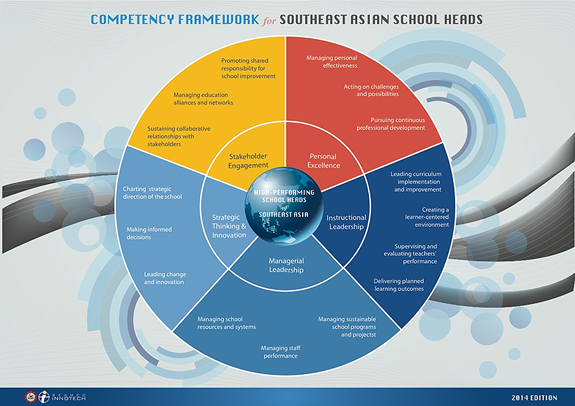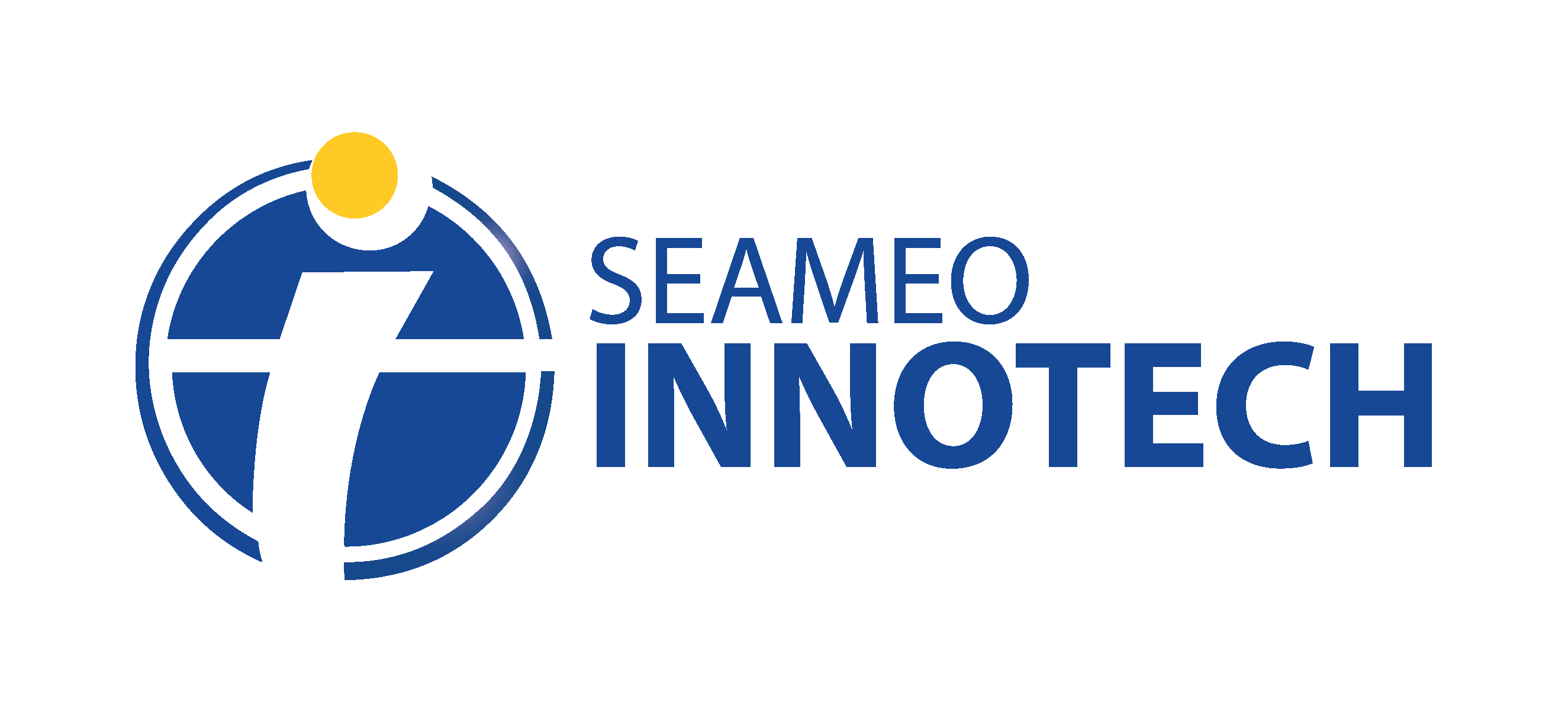
New SEA School Heads Competency Framework
With only a few details to work on, the Center is set to release the 2014 edition of the competency framework for Southeast Asian school heads. Since its initial presentation to the Center’s governing board members in October 2013, the competency framework has been enhanced following comments from the Board.
The 2014 edition lists down relevant and important competencies needed by school heads nowadays to perform highly in their jobs. It consists of five (5) competency domains, 16 general competency areas, and 42 enabling competencies.
The competency domains refer to the main categories of competencies in the framework. The general competencies, on the other hand, are knowledge, skills, commitments, and abilities describing an excellent Southeast Asian school heads, while the enabling competencies refer to behaviours depicting the general competencies.
SEAMEO INNOTECH’s Instructional Design and Materials Development Unit (IDMDU) spearheaded the process of updating the decade-old competency framework beginning early 2013.
From February to June 2013, IDMDU undertook a series of focus group discussions and consultations in a number of Southeast Asian countries (READ: Validation of the Revised Competency Framework for Southeast Asian School Heads). From these activities, a set of recommended competencies were formed, and these were later validated and finalized during a three-day regional workshop in September 2013.
The output of the validation workshop was the version presented by Dr. Sharon Joy Berlin-Chao, manager of SEAMEO INNOTECH’s Learning Management Office, during the 57th GB meeting in October 2013. To date, much of the inputs received during the meeting have been addressed, and six GB members have already given their approval of the latest version.
The original competency framework defined 12 major competency strands (represented by alphabet letters A to L) and 106 enabling competencies, presented in a table similar to the standard Periodic Table of Elements. Later on, two competency strands were added—the Competency Strand M on Promoting and Exercising a Culture of Peace and Respect for Cultural Diversity (2005), and the Competency Strand N on Promoting and Understanding of Southeast Asia Community (2010).
The latest edition, which now resembles the Ring of Periodic Elements, identifies the following competencies as its primary domains: (1) personal excellence, (2) instructional leadership, (3) managerial leadership, (4) strategic thinking and innovation, and (5) stakeholder engagement.





